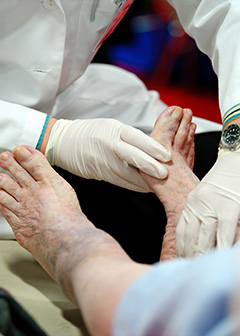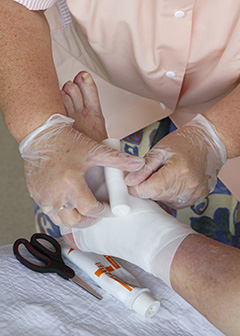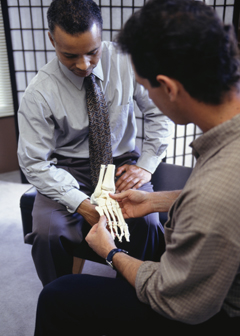Summary
Please enable javascript to play this video.
| Quick Facts: Podiatrists | |
|---|---|
|
$152,800 per year
$73.46 per hour |
|
| Doctoral or professional degree | |
| None | |
| Internship/residency | |
| 9,700 | |
| 2% (Slower than average) | |
| 200 | |
What Podiatrists Do
Podiatrists provide medical and surgical care for people with foot, ankle, and lower leg problems.
Work Environment
Podiatrists usually work in offices of podiatry, other medical offices, or hospitals. Most work full time, and some need to be on call for emergencies.
How to Become a Podiatrist
Podiatrists must earn a Doctor of Podiatric Medicine (DPM) degree and complete a 3-year residency program. Every state requires podiatrists to be licensed.
Pay
The median annual wage for podiatrists was $152,800 in May 2024.
Job Outlook
Employment of podiatrists is projected to grow 2 percent from 2024 to 2034, slower than the average for all occupations.
Despite limited employment growth, about 300 openings for podiatrists are projected each year, on average, over the decade. Most of those openings are expected to result from the need to replace workers who transfer to different occupations or exit the labor force, such as to retire.
State & Area Data
Explore resources for employment and wages by state and area for podiatrists.
Similar Occupations
Compare the job duties, education, job growth, and pay of podiatrists with similar occupations.
More Information, Including Links to O*NET
Learn more about podiatrists by visiting additional resources, including O*NET, a source on key characteristics of workers and occupations.
 United States Department of Labor
United States Department of Labor









